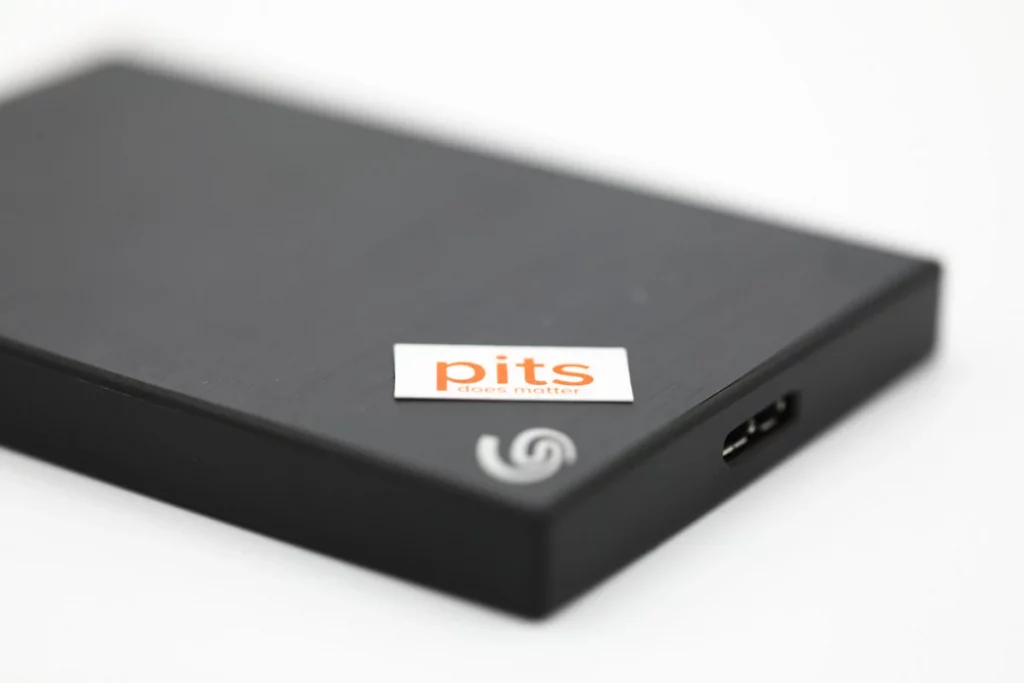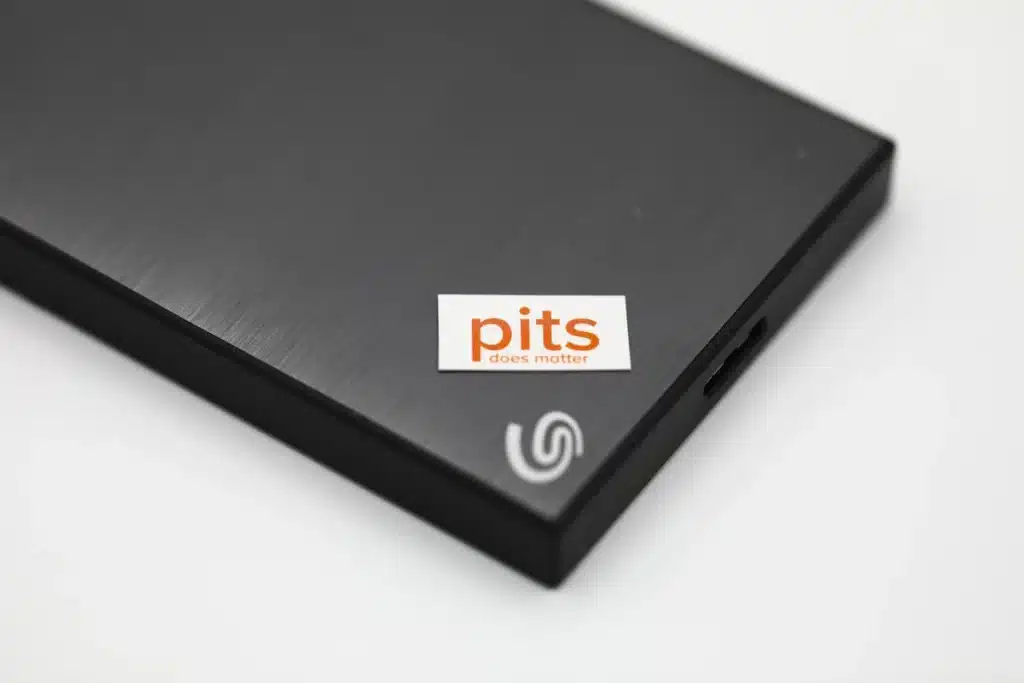We recently received a request from a customer who needed data restoration from a Seagate One Touch 5TB Portable SSD. The client reported that the drive was not showing up on his computer.
The customer mentioned that he needed data stored on the SSD as soon as possible. Hence, he requested emergency recovery, and we immediately began our evaluation process to determine the cause of the SSD’s inaccessibility.
Seagate One Touch Not Showing Up Reasons
One of the main reasons why a computer does not recognize an external SSD drive is due to a faulty USB connection. The Seagate One Touch 5TB Portable SSD is designed with a USB 3.2 Gen 1 interface, allowing fast data transfer speeds.
However, if the USB cable is damaged, the system may not detect the drive. In some cases, the USB port on the computer may also be damaged or not functioning correctly, resulting in the SSD not being recognized.

Another common reason for SSD inaccessibility is outdated or missing device drivers. If the computer does not have the correct drivers installed, it may not be able to recognize the external SSD drive. This can be fixed by updating the device driver through the device manager in Windows.
However, our client checked all of these factors mentioned above, and the drive still was not recognized. Hence, he decided to send the device to our lab.
During the evaluation process, our engineers performed a risk-free evaluation and special tests to determine the cause of the Seagate One Touch 5TB Portable SSD’s inaccessibility. We checked the device with the correct drivers and tested the USB cable to ensure it was functioning correctly. After a thorough evaluation, we found that the device suffered from a file system issue, preventing the system from recognizing it.
Preventive Measures for SSD from File System Issue
By implementing these preventive measures, you can seriously reduce the risk of encountering SSD file system issues, ensuring the longevity and reliability of your solid-state drive including the Seagate One Touch SSD.
Regular Firmware Updates
It is important to remain watchful for firmware updates made available by your SSD manufacturer and apply them as necessary. These updates often include crucial bug fixes, enhancements to performance, and better compatibility with your system. Keeping your SSD’s firmware up to date can help reduce the possibility of encountering problems.
Enable TRIM
Be sure to enable TRIM (Trimming) on your SSD and confirm its compatibility with your operating system. TRIM is a proactive management feature that assists in cleaning up unused data blocks, which helps ensure consistent performance of the SSD over time. Performance degradation of your SSD may occur without TRIM.
Backup Data
It is crucial to have a consistent backup plan in place to safeguard your important data. By performing routine backups to an external drive, network-attached storage (NAS), or a cloud-based service, you can protect your files from potential SSD failures, such as hardware faults or data corruption.
Maintain Adequate Free Space
Leave a considerable portion of your SSD’s capacity free (typically 10-20%) to allow the SSD’s wear-leveling algorithms to work effectively. By distributing write and erase cycles evenly across the NAND cells, you can extend your SSD’s lifespan while ensuring consistent performance.
Use Reliable Software
Opt for reliable and properly maintained software applications for daily computing activities. Dependable software minimizes the chances of compatibility issues or file system errors that can harm your SSD’s data integrity.
Monitor Drive Health
Ensure to frequently inspect the well-being and warmth of your SSD by utilizing the diagnostic utilities given by the vendor. By supervising these aspects, you can identify initial indications of SSD problems, for instance, flawed blocks, and deal with them suitably before they turn into more severe complications.
Our Method for Professional Seagate Data Recovery
The data recovery process for the Seagate One Touch 5TB Portable SSD involved several steps that our team of experienced engineers followed to ensure the safe and successful recovery of the customer’s data.
Our engineers first needed to fix the Seagate external hard drive’s file system issue to recover the data. We used specialized tools to scan and repair the file system, which allowed the system to recognize the media. Once the file system issue was resolved, we could access the data stored on the SSD.
Our engineers also identified the files that needed to be restored, which included many files related to the Adobe Creative Cloud Photography plan and Mylio Create software.

Based on the nature of the issue and the files that needed to be restored, our team decided to use specialized methods to recover the lost data. We used a combination of proprietary and industry-standard tools to create an image of the drive and recover the lost files.
Our team then began the data recovery process, which involved recovering the lost data from the image of the drive that we had created.
Engineers at PITS used specialized techniques to scan the drive for lost files and recover them to a separate drive.
We followed industry-standard data recovery practices to ensure that the recovery process was safe and secure. Our team took extra precautions to avoid data loss during recovery, ensuring that the customer’s data was recovered intact.
Seagate One Touch Data Recovery Results
Once the data recovery process was complete, we performed a verification session to ensure the customer’s requested data was recovered successfully. We provided the client with a list of recovered files and asked him to verify that the valuable files were successfully restored.
Our team of experienced engineers safely recovered 99% of the customer’s lost data within 36 hours. The client was satisfied with the results of the data recovery and informed us as soon as he received the files. Upon receiving it, our team completely erased the client’s confidential data from our servers. This way, we support the highest level of security for our customers.
In conclusion, our highly-qualified technicians successfully resolved the Seagate One Touch 5TB Portable SSD data recovery case. They recovered 99% of the data within 36 hours, showing their ability to work in urgent situations.
Benefits of Choosing Our Data Recovery Services
We take pride in our professional data recovery services. Our team uses state-of-the-art equipment to recover data safely and securely, ensuring no data is lost. Engineers at PITS are specially trained to handle data loss scenarios of all types, including those involving Seagate drives.
We offer flexible data recovery services that are tailored to meet the needs of each customer. By using our services, customers can benefit from our expertise and experience in recovering data from various devices and file systems. Our goal is to provide fast and reliable data recovery services while maintaining the highest level of customer satisfaction.
Our team understands the importance of data, and we strive to deliver high-quality services to our customers. We ensure that every recovery process is performed with the utmost care and attention to detail.
Our data recovery services cover a wide range of devices and storage media, including HDDs, SSDs, RAIDs, USB drives, and more. We also provide data recovery services for various file systems, such as NTFS, FAT, HFS+, APFS, and more.






We understand that data loss can occur anytime, so we offer 24/7 emergency data recovery services. We guarantee that we will do everything in our power to recover your data as quickly as possible. Our team is always ready to respond to any data loss emergency.
The Seagate SSD data recovery case is a perfect example of how our team can recover data in an efficient manner. By using our professional data recovery services, customers can rest assured that their data will be restored. Hence, if you are facing Seagate One Touch portable hard drive not showing up, or SSD not recognized, get in touch with us.
Contact us today to learn more about our data recovery services and how we can help you recover your data. You can get in touch with our team by filling out the form below.
Frequently Asked Questions
What is Seagate One Touch SSD data recovery?
Seagate One Touch SSD data recovery refers to the process of attempting to recover lost or damaged data from a Seagate One Touch Solid State Drive (SSD) storage device. This may involve using software tools and techniques to read the data from the SSD and extract it onto another storage medium.
When should I consider using a professional Seagate One Touch SSD data recovery service?
You should consider using a professional Seagate One Touch SSD data recovery service if the data on the SSD is of critical importance, if you don’t have the necessary skills or equipment for DIY data recovery, or if you’ve attempted DIY recovery without success.
How do I choose a professional Seagate One Touch SSD data recovery service?
When choosing a professional Seagate One Touch SSD data recovery service, consider factors such as their reputation, expertise, success rate, and cost. Look for reviews and recommendations from other customers, and ask about their experience recovering data from Seagate One Touch SSDs.
What are the common causes of data loss on SSDs and hard disk drives?
Common causes of data loss on SSDs and hard disk drives include physical damage, software or hardware failure, virus or malware infections, accidental deletion or formatting, power surges, and natural disasters such as floods or fires.
How can I prevent data loss on my SSD or hard disk drive?
To prevent data loss on your SSD or hard disk drive, you should regularly back up your data to an external storage device or cloud storage service. You can also use anti-virus software to protect your computer from malware and viruses, avoid using untrusted software or websites, and handle your SSD or hard disk drive with care to prevent physical damage. Additionally, you can use utilities such as disk cleanup and disk defragmentation to keep your SSD or hard disk drive running smoothly and reduce the risk of data loss due to software or hardware failure.


